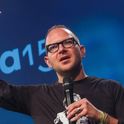What's at steak? Debates over the relative safety of meat forget that for most of us, risk is personal. Photo: Pixabay/Prospect composite
Whose risk is it anyway?
Where there’s meat, there’s blood. Even academic research into the personal health risks of eating it has become vicious. Cut down, says the old; eat what you like, says the new, only for advocates of the old to beat up the revisionists (“these authors are wrong about absolutely everything” … “the most egregious abuse of evidence I have ever seen”). Experts, eh?
The funny thing, though, about the latest research on the health effects of eating red and processed meat is that the risk has hardly changed. Research new and old arrived at similar numbers. Why, then, the bust up? Because both sides felt obliged to pronounce on whether that same risk was tolerable.
This was not a clash over the science, it was a clash of paternalism about how much risk we should accept. There is nothing in the data itself to define acceptability. Only competing ideas as to what “acceptable” should be.
One question then, is why they don’t just give us the data and stop there. Leave us to make up our own minds. Whether to inform or to try to persuade is a choice—not always an easy one, but a choice all the same. It’s also one colleagues at the Winton Centre for Risk and Evidence Communication think could be exercised more judiciously. For whatever reason, the personal health risk of eating meat has become a war of persuasion with reputational cost to science that might have been avoided.
After all, whose risk is it anyway? Because if it’s personal, then we all define our own fears. I flinch my way past raised umbrellas. Others wonder what I’m fussing about. Scarier even than that, the climber Alex Honnold scaled El Capitan without ropes, as captured in the film Free Solo. Some I know couldn’t watch, wondering ‘how could he?’ Well, perhaps you couldn’t, but he could, and he did. Clearly, the numbers matter, but so do our own values and preferences—and this subjectivity is inherent to risk.
So, how scary is the meat data for you? There are various ways to interpret it, and this variety helps explain how people come to different conclusions.
We can, for example, say that 3 extra rashers (50g) of bacon a day brings an 18 per cent rise in the chance of colorectal cancer—and although we don’t know who precisely will be harmed, some certainly will. Altogether, there will be many thousands of cases. This is a population perspective that might mean we say step away from the butty.
Or we might say that, ordinarily, in every 100 people, roughly 6 will have colorectal cancer at some point. If all 100 eat an extra bacon sarnie every day (which for 100 adult lifetimes adds up to over 1,500,000 bacon sarnies), those 6 cases will rise to 7. That’s our extra 18 per cent, equal to one extra case in 100 people. This means I still have a 99 out of 100 chance that a lot of extra bacon won’t give me colorectal cancer. Thus, from an individual perspective, the risk is highly uncertain and, in fact, highly unlikely. Pass the ketchup.
The difference between these perspectives underlies much of the conflicting advice, with one side taking a population perspective to say that the riskis certain and big, while the other takes an individual perspective and says that 1 in 100 is highly uncertain—a lottery almost—and broadly ok, if you like bacon.
But frankly, no-one can tell you how to feel about any of this, especially as the data is not entirely reliable. You might say 1 in 100 is high for a horrible disease (though remember how much bacon is involved). Or you might compare it with risks like driving, which has about a 1 in 100 risk of death or serious injury in 30 years. How bad is that? You decide.
‘Do this, do that,’ we’re told, sometimes with the claim that people positively want advice. But had they not been told what to do—first one thing, then another—they might have been less confused, less cynical, more informed.
Of course, as we consider risks that are more societal or have more effect on others, so the calculation can change. The argument that we should lay off meat because of the environment adds to the perspectives we must evaluate beyond our own. Personal judgement must meet collective judgement because policy might depend on it. (Add your own externalities here).
But so far as risk is personal, only we can decide if it’s worth taking, given the reward. Free soloing El Capitan? Are you kidding me? But don’t try to tell Alex Honnold. The numbers count, but acceptability is in the eye of the beholder.













